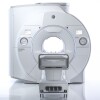Special report: Tips on greening your hospital
January 18, 2014

From the January 2014 issue of HealthCare Business News magazine
By Laura Wenger
Many hospitals and health care facilities wonder how to take the first steps toward sustainability. While there are many ways to introduce sustainability into a health care facility, there are few best practices that will help you drive change throughout your organization. Below are a few tips to start you on your journey and ensure you are successful in greening your hospital or health care facility.
Engage leaders. When leaders around the boardroom table nod their heads in support of sustainability, it’s easy to rock back in our chairs, breathe a loud sigh of relief, and think the job is done. While it certainly feels good, achieving support for sustainability doesn’t mean immediate change. The hospitals with the most successful sustainability initiatives have strong, engaged leaders who have moved beyond just buying-in to the concept of the work — they take ownership over progress and results. To ensure lasting, facility-wide change, build support among key decision-makers throughout all levels of the organization.
Create a green team. One person can’t do it all. With a group of committed staff leading the charge, it becomes easier for hospitals to cultivate buy-in, harvest great ideas, and carry out actions. Make sure you’ve got expertise from various departments—from nursing, physicians, and pharmacy to marketing, nutrition and procurement. Having a well-rounded group makes it easier to vet new strategies, consider different perspectives, and most importantly, drive system-wide change. Plus, when diverse leaders choose to invest time, energy, and resources into the team, a strong message is sent that sustainability is important to your business.
Develop a sustainability baseline. You can’t manage what you don’t measure. An accurate baseline allows organizations to understand where they are starting from, be it in energy and water use, the creation of waste and greenhouse gas emissions or the amount of local, organic food served in your cafeteria. Setting a baseline and measuring improvement also gives you the opportunity to celebrate environmental successes to date. Not only does data help document change and progress, but it also alerts you when sustainability programs are not performing as well as they should.
Define your sustainability goals. Once you’ve measured your baseline, it’s time to set some goals. In doing so, it’s important to remember improving your environmental performance is a marathon, not a sprint. Successful sustainability programs are guided by facility-wide goals measured over time with progress can be evaluated from year-to-year. Think strategically about what’s achievable for your organization, considering factors unique to your organization such as the changing organizational culture, level of leadership engagement, and amount of financial support.
By Laura Wenger
Many hospitals and health care facilities wonder how to take the first steps toward sustainability. While there are many ways to introduce sustainability into a health care facility, there are few best practices that will help you drive change throughout your organization. Below are a few tips to start you on your journey and ensure you are successful in greening your hospital or health care facility.
Engage leaders. When leaders around the boardroom table nod their heads in support of sustainability, it’s easy to rock back in our chairs, breathe a loud sigh of relief, and think the job is done. While it certainly feels good, achieving support for sustainability doesn’t mean immediate change. The hospitals with the most successful sustainability initiatives have strong, engaged leaders who have moved beyond just buying-in to the concept of the work — they take ownership over progress and results. To ensure lasting, facility-wide change, build support among key decision-makers throughout all levels of the organization.
Create a green team. One person can’t do it all. With a group of committed staff leading the charge, it becomes easier for hospitals to cultivate buy-in, harvest great ideas, and carry out actions. Make sure you’ve got expertise from various departments—from nursing, physicians, and pharmacy to marketing, nutrition and procurement. Having a well-rounded group makes it easier to vet new strategies, consider different perspectives, and most importantly, drive system-wide change. Plus, when diverse leaders choose to invest time, energy, and resources into the team, a strong message is sent that sustainability is important to your business.
Develop a sustainability baseline. You can’t manage what you don’t measure. An accurate baseline allows organizations to understand where they are starting from, be it in energy and water use, the creation of waste and greenhouse gas emissions or the amount of local, organic food served in your cafeteria. Setting a baseline and measuring improvement also gives you the opportunity to celebrate environmental successes to date. Not only does data help document change and progress, but it also alerts you when sustainability programs are not performing as well as they should.
Define your sustainability goals. Once you’ve measured your baseline, it’s time to set some goals. In doing so, it’s important to remember improving your environmental performance is a marathon, not a sprint. Successful sustainability programs are guided by facility-wide goals measured over time with progress can be evaluated from year-to-year. Think strategically about what’s achievable for your organization, considering factors unique to your organization such as the changing organizational culture, level of leadership engagement, and amount of financial support.
1(current)
You Must Be Logged In To Post A CommentRegisterRegistration is Free and Easy. Enjoy the benefits of The World's Leading New & Used Medical Equipment Marketplace. Register Now! |
|










